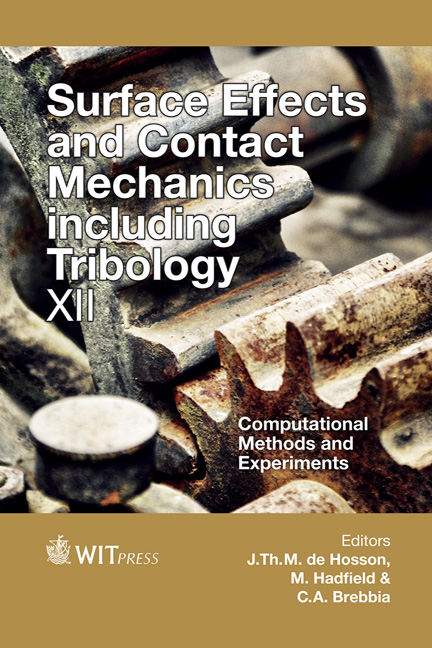Modelling Of Metal-to-metal Seals In A Pressure Relief Valve Using Advanced FE-analysis
Price
Free (open access)
Transaction
Volume
91
Pages
12
Page Range
247 - 258
Published
2015
Size
595 kb
Paper DOI
10.2495/SECM150221
Copyright
WIT Press
Author(s)
Y. Gorash, W. Dempster, W. D. Nicholls, R. Hamilton
Abstract
This study investigates the behaviour of the contact faces in the metal-to-metal seal of a typical pressure relief valve. The valve geometry is simplified to an axisymmetric problem. A cylindrical nozzle, which has a valve seat on top, contacts with a disk, which is preloaded by a compressed linear spring. All the components are made of the steel AISI type 316N(L) defined using the multilinear kinematic hardening material model based on monotonic and cyclic tests at 20°C. Analysis considerations include the effects of the Fluid Pressure Penetration (FPP) across the valve seat which exists at two different scales. There is certain limited fluid leakage through the valve seat at operational pressures, which is caused by the fluid penetrating into surface asperities at the microscale. At the macroscale, non-linear FE-analysis using the FPP technique available in ANSYS revealed that there is also a limited amount of fluid penetrating into gap. Accurate prediction of the fluid pressure profile over the valve seat is addressed in this study by considering the FPP interaction on both scales. The shape of this pressure profile introduces an additional component of the spring force, which needs to be considered to provide a reliable sealing. The analysis showed that the evolution of the profile, which is caused by the isotropic softening of the material, is significant during the cyclic operation of the valve.
Keywords
contact, finite element analysis, metal-to-metal seal, plasticity, pressure penetration, safety valve, type 316 steel





